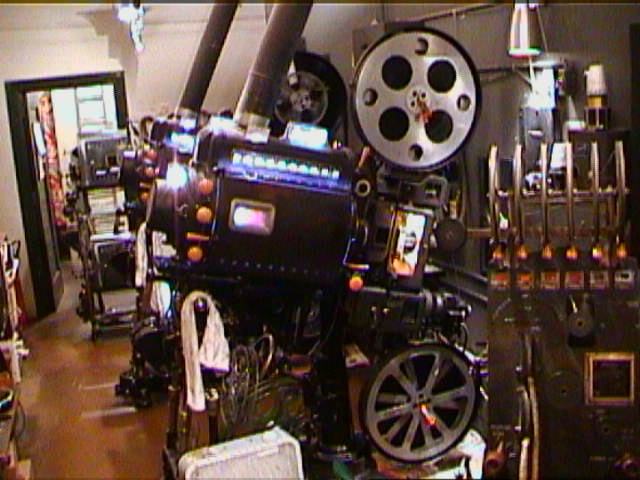
Projection booth 4th floor (right to left): back of the Master Spot, Projector #2, Projector #1,
and the Brenograph in front of the door.
(This photo was taken with my back to the dimmer board and next to the 16mm Eiki projector.)

Sound Systems left to right: Tapes and cassette recorder for announcements, house and lobby music. 1940's amplifiers and power supplies (grey - supplies the center channel sound), between these and the 1953 CinemaScope 4 channel magnetic sound amplifiers (the other grey colum mounted on the wall) is the current optical 4 channel decoder, left & right channel, and the surround channel amplifiers.
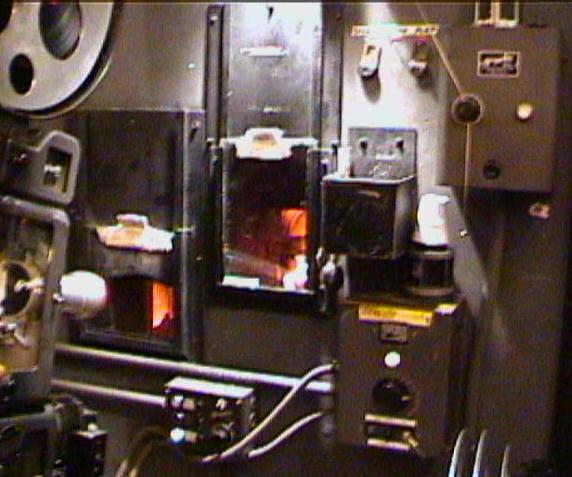
Front wall near projector #2 left to right: Front of projector #2, Sound selector box (lower center) allows switching to magnetic sound at the push of a button, Optical sound 4 channel controls for Projector #2 (lower right), note the "flat" small screen lens is sitting on top of this pre-amp. The CinemaScope lens is in the projector (silver object left center). Magnetic sound 4 channel controls for Projector #2 (top right), Through the port holes you can see the auditorium in light for an intermission.
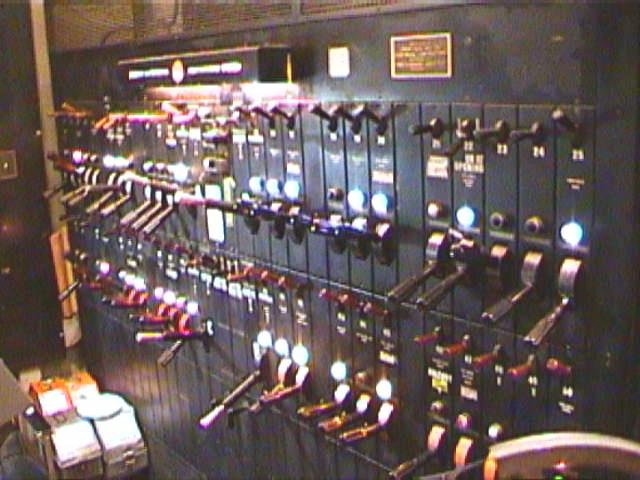
The house and stage lighting control board has 50 circuits/dimmers and is 11' x 7' in size - the actual dimmers are on the 3rd floor below. It is broken up into 4 color groups with top left: assortment, top right: blue, lower left: red, lower right: amber. In the center are the 4 main motorized bus levers so a whole color can be changed at a time.
I have never seen any other theater where the whole house has 4 color light circuits in every fixture like you would find on a stage. This allows the operator to make the entire house red, blue, amber, green or any combination (not just the stage).
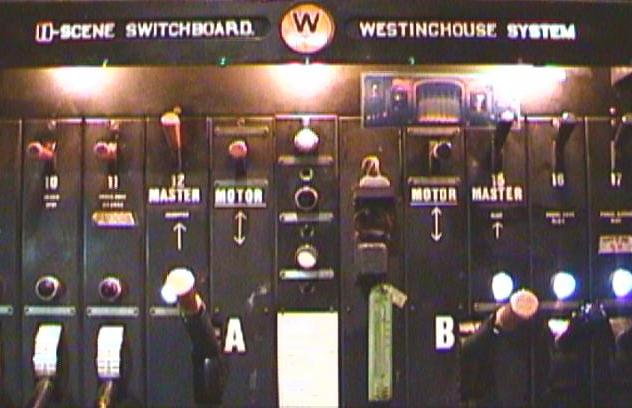
Shown here is the top center of the dimmer board with the assortment master #12, bus A, and motor control on the left and with the blue same on the right. In the center are signaling buttons and buzzer to alert the manager or organist.
(Note: This is a 1 Scene Switchboard by Westinghouse.)
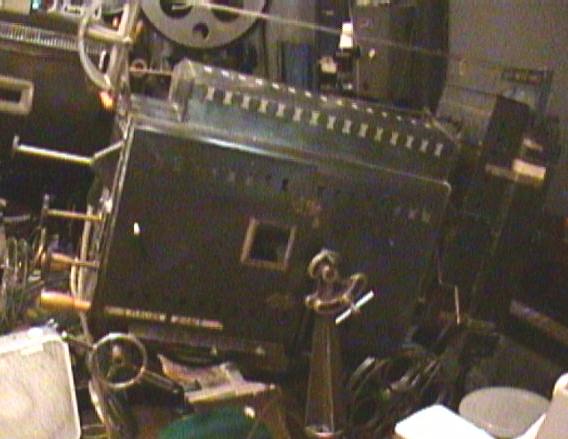

The Byrd's original master carbon-arc spotlight is still used weekly. It puts out a very intense white light, around 5,000 watts. (On the stage you can feel some heat when it's on you!) The semicircular levers at the top left lower color filters into place in the front. The knobs on the back adjust the arc. The carbons can be seen in the right photo in the center with the arc taking place, when on, just below the light colored rectangle (held in place by 2 pieces coming up in the back).

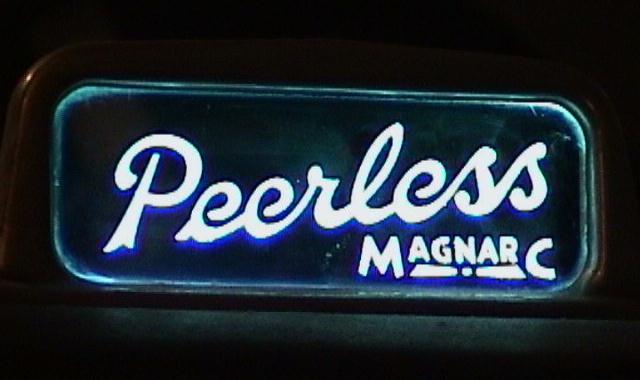
Notice the lit Peerless arc-lite logo on top each projector lamp.
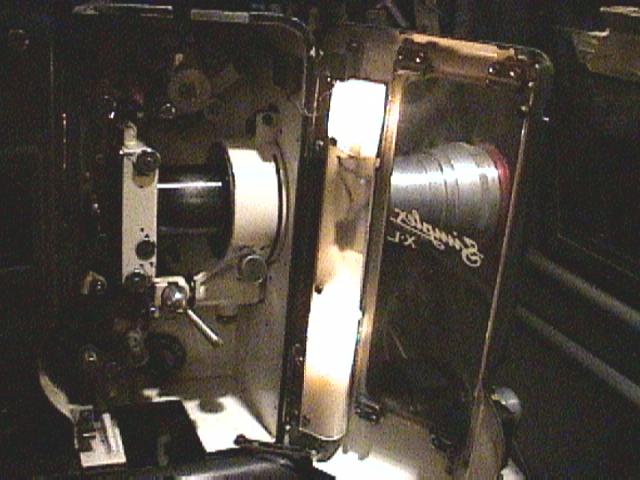
We use Simplex X-L projectors at the Byrd. These were installed in 1953 on the original 1928 bases and are still the best on the market today. The projector is just the part shown here. In the picture above you can see the magnetic sound pickup just above the projector and the next picture is the optical sound pickup located just below the projector.
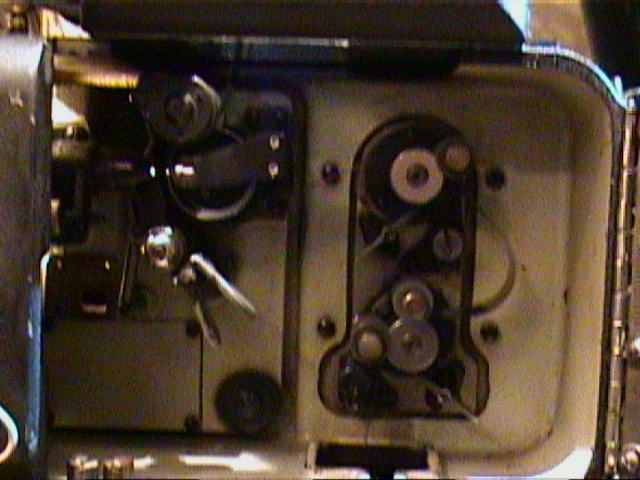
The optical sound is taken off the film in this device mounted just below the projector and shown here running. Look for the silver knob left of center in the middle. A little above that you can see 3 spots of light. The left most is the light source. The center is the film and the stereo photocell is the larger spot of the 3 to the right.

Our newest projector is this Eiki 16mm projector we use for silent films for organ accompaniment and sound shorts. It uses a 1,000 watt xenon lamp and is plenty bright on the smallest of our screen sizes.
Note: We have 3 screen sizes all are the same height, ~16', but vary in width to fit the format.
(Our screen ratios are: 1:1.33, 1:1.85, & 1:2.37)
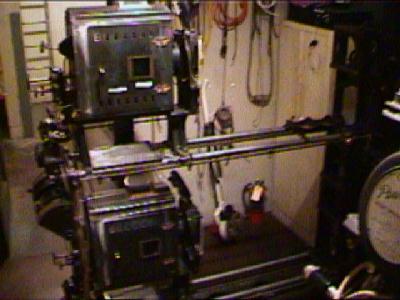
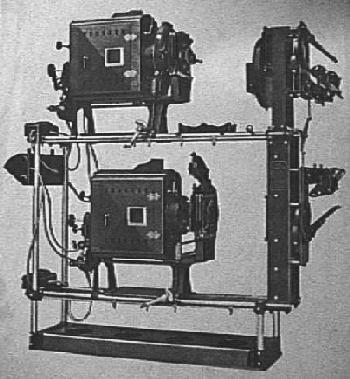
This is our original 1928 Brenograph Multi-purpose Projector, one of many pieces of equipment we maintain and use daily at the Byrd. I included a photo from the manual of this piece because I couldn't get in a place that would show what this truly looked like. It consists of 2 auto-feed arc lamps on optical benches with slide holders, a wind-up color wheel, 4 iris, a set of 3D class slides, and 8 lenses to project slides, effects, and doubles as 2 follow spots with quick change features and the ability to fade.
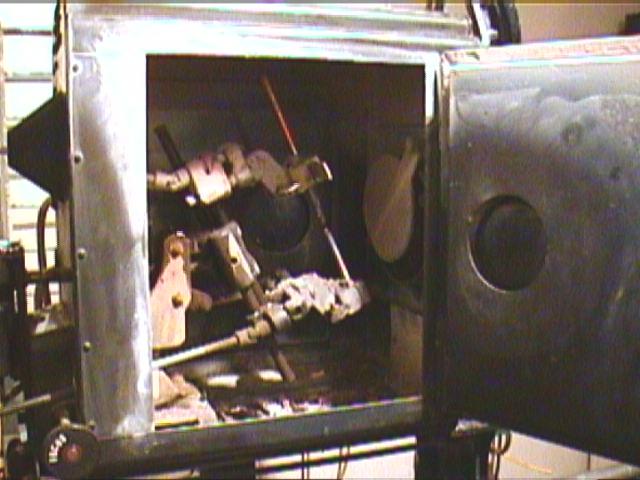
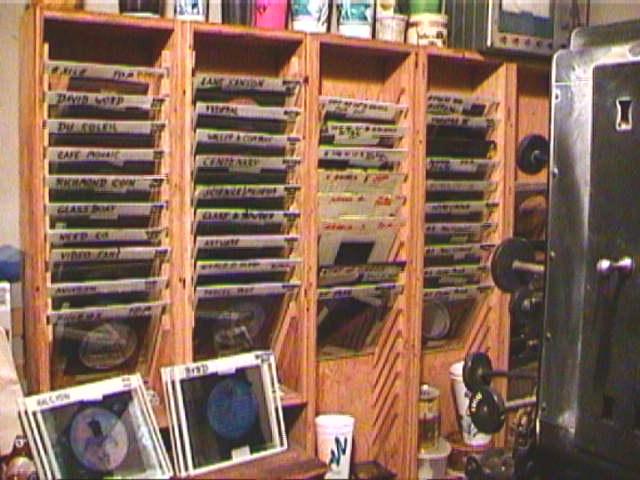
On the left you can see the carbon rods and feed mechanism in the top lamp. In the right photo are our advertisement slides used to help support the Byrd. We often use this projector for sing-a-long slides during the weelky organ concerts. (Some 3x4" song slides are just to the right of the cup in the center.)
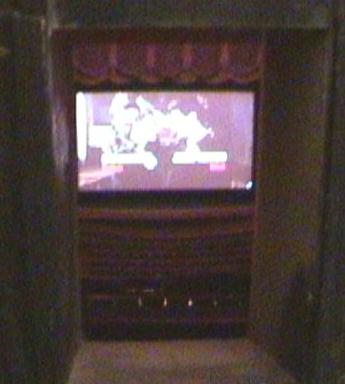
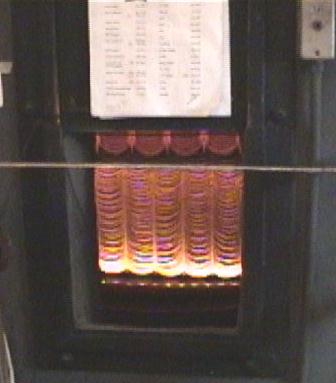
Looking through a port hole you can see what the house looks like from the booth with only the light from the movie. In the right picture the stage lights are up very low. (I was amazed how well the left photo came out because I couldn't see the curtain or seats myself.)
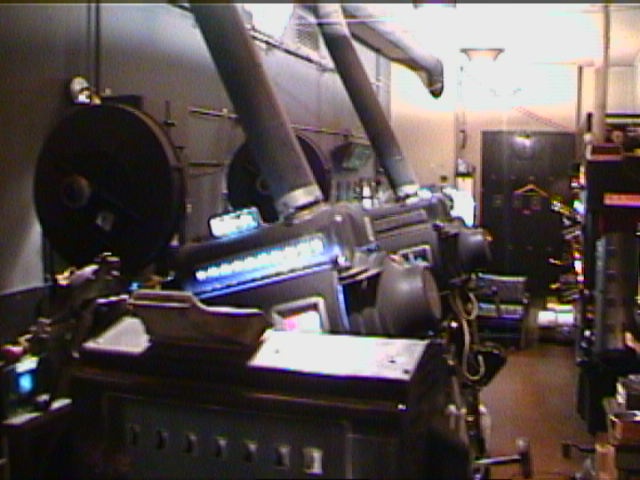
Looking back from the door you can see the heat exhausts for the projectors lamps and the dimmer board on the far right.
Use your back button to return.